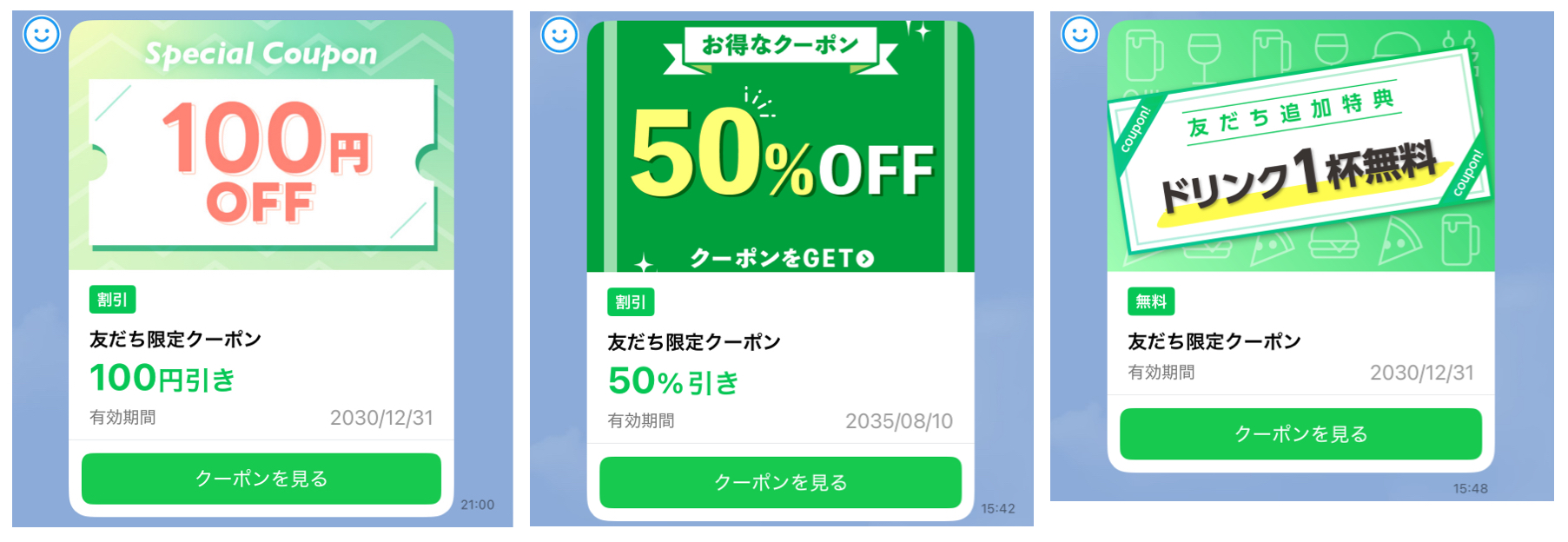You can now create coupons using the Messaging API and send them to users as messages from your LINE Official Account.

# Added Features
- Create a coupon
- Discontinue a coupon
- Get a list of coupons
- Get details of a coupon
- Send messages with the message type set to Coupon message
For more information, see Create coupons and send them to users in the Messaging API documentation.
# LINE Messaging API SDK Updates
For more information about the update status of each SDK release in line with the addition of these new features, see the LINE Messaging API SDK release notes.














